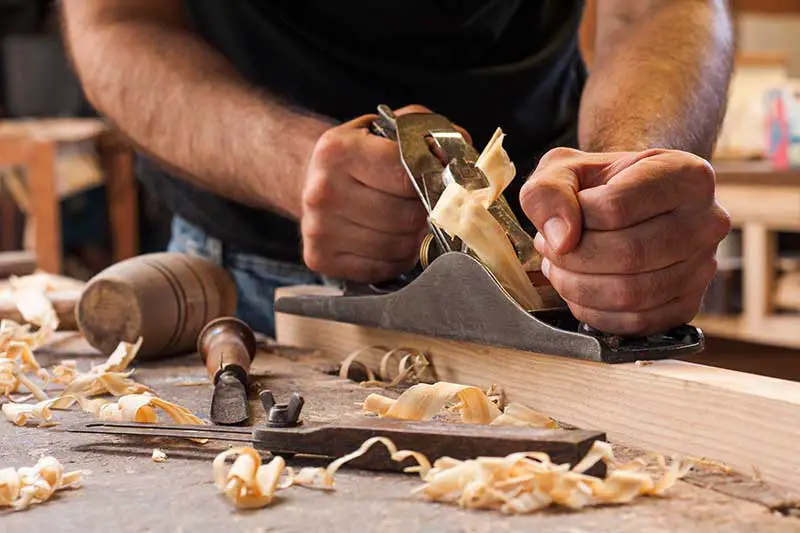What is a planer?
A planer is a woodworking tool designed to trim and smooth surfaces by shaving off thin layers of material. It helps achieve a uniform thickness and a flat, even surface on a workpiece. Planers are commonly used for woodworking, cabinetry, and carpentry projects. They come in various forms, from handheld manual tools to large, industrial machines.

What is a wood planer?
A wood planer is a type of planer specifically designed for working with wood. It can be used to smooth rough lumber, square up boards, or create a consistent thickness across a workpiece. Wood planers come in various types, including hand planers, portable electric planers, and stationary planers. Each type serves a unique purpose and is suited for different applications, from small-scale woodworking projects to large-scale manufacturing.
“Wood planers are indispensable for any woodworker, ensuring precise dimensions and a professional finish.”
What is a planer machine?
A planer machine is a larger, electrically-powered version of a planer, typically used in industrial settings. These machines have powerful motors and larger cutting surfaces that can handle bulkier workpieces and process larger volumes of material. Planer machines often feature adjustable cutting depths, variable speed settings, and dust collection systems. They are designed for heavy-duty woodworking tasks, such as milling large slabs of hardwood or preparing lumber for cabinetry and furniture construction.
What is a hand planer?
A hand planer, also known as a manual planer or bench plane, is a traditional woodworking tool that is operated manually. It consists of a flat base, a sharp cutting blade, and a handle for control. Hand planers are used to shave off small amounts of material from a workpiece’s surface, allowing for precise adjustments and a smooth finish. They are ideal for small-scale woodworking projects, fine-tuning joints, and refining edges.
“Hand planers offer a level of control and craftsmanship that is unmatched by power tools, making them a favorite among traditional woodworkers.”
What is a planer thicknesser?
A planer thicknesser, also known as a thickness planer, is a woodworking machine that combines the functions of a planer and a thicknesser. It is designed to smooth and trim a workpiece’s surface while simultaneously ensuring a uniform thickness. Planer thicknessers are particularly useful for processing rough lumber or creating custom-sized boards for woodworking projects. They have adjustable cutting depths and feed rates, allowing for precise control over the dimensions and finish of the workpiece.
| Type | Purpose | Best For |
|---|---|---|
| Wood Planer | Trimming and smoothing wood surfaces | Woodworking, cabinetry, and carpentry projects |
| Planer Machine | Handling bulkier workpieces in industrial settings | Heavy-duty woodworking tasks |
| Hand Planer | Manual operation for precise adjustments | Small-scale woodworking projects and fine-tuning |
| Planer Thicknesser | Combining planing and thicknessing functions | Processing rough lumber and custom-sized boards |
Comparing Planer Types
Hand Planers
Advantages:
- Affordable and portable
- Offers high level of control and precision
- Ideal for small-scale projects and fine-tuning workpieces
Disadvantages:
- Requires more physical effort
- Slower than powered planers
- Not suitable for large-scale projects
Portable Electric Planers
Advantages:
- Faster and more efficient than hand planers
- Portable and easy to store
- Suitable for various woodworking tasks
Disadvantages:
- Less control than hand planers
- Limited cutting capacity compared to stationary planers
- Can be noisy and generate dust
Stationary Planers
Advantages:
- Powerful and versatile
- Can handle larger workpieces
- Offers a range of features, such as adjustable cutting depths and variable speed settings
Disadvantages:
- Expensive and requires a dedicated workspace
- Not portable
- Requires regular maintenance
Planer Thicknessers
Advantages:
- Combines planing and thicknessing functions
- Efficient and time-saving
- Suitable for processing rough lumber and creating custom-sized boards
Disadvantages:
- Can be expensive
- Requires more space than other planers
- Complex operation and maintenance
| Planer Type | Advantages | Disadvantages |
|---|---|---|
| Hand Planers | Affordable, portable, high control and precision | More physical effort, slow, not for large projects |
| Portable Electric Planers | Faster, portable, suitable for various tasks | Less control, limited cutting capacity, noisy and dusty |
| Stationary Planers | Powerful, versatile, handles larger workpieces | Expensive, not portable, regular maintenance required |
| Planer Thicknessers | Combines planing and thicknessing, efficient, time-saving | Expensive, requires more space, complex operation and maintenance |
Table 2: Comparison of different planer types, their advantages, and disadvantages.
Key Takeaways:
- A planer is a woodworking tool used to smooth, shape, and flatten surfaces.
- Wood planers come in various types, including hand planers, portable electric planers, stationary planers, and planer thicknessers.
- Hand planers are affordable and offer high control, while portable electric planers are faster and suitable for various tasks.
- Stationary planers are powerful and versatile, while planer thicknessers combine planing and thicknessing functions for efficient woodworking.
Conclusion
Planers are essential tools in woodworking, helping you achieve flat, smooth surfaces and consistent thicknesses in your workpieces. There are various types of planers, including wood planers, planer machines, hand planers, and planer thicknessers. Each type has its unique features and is best suited for different applications. By understanding the differences between these planers, you can choose the right tool for your woodworking needs and projects.
